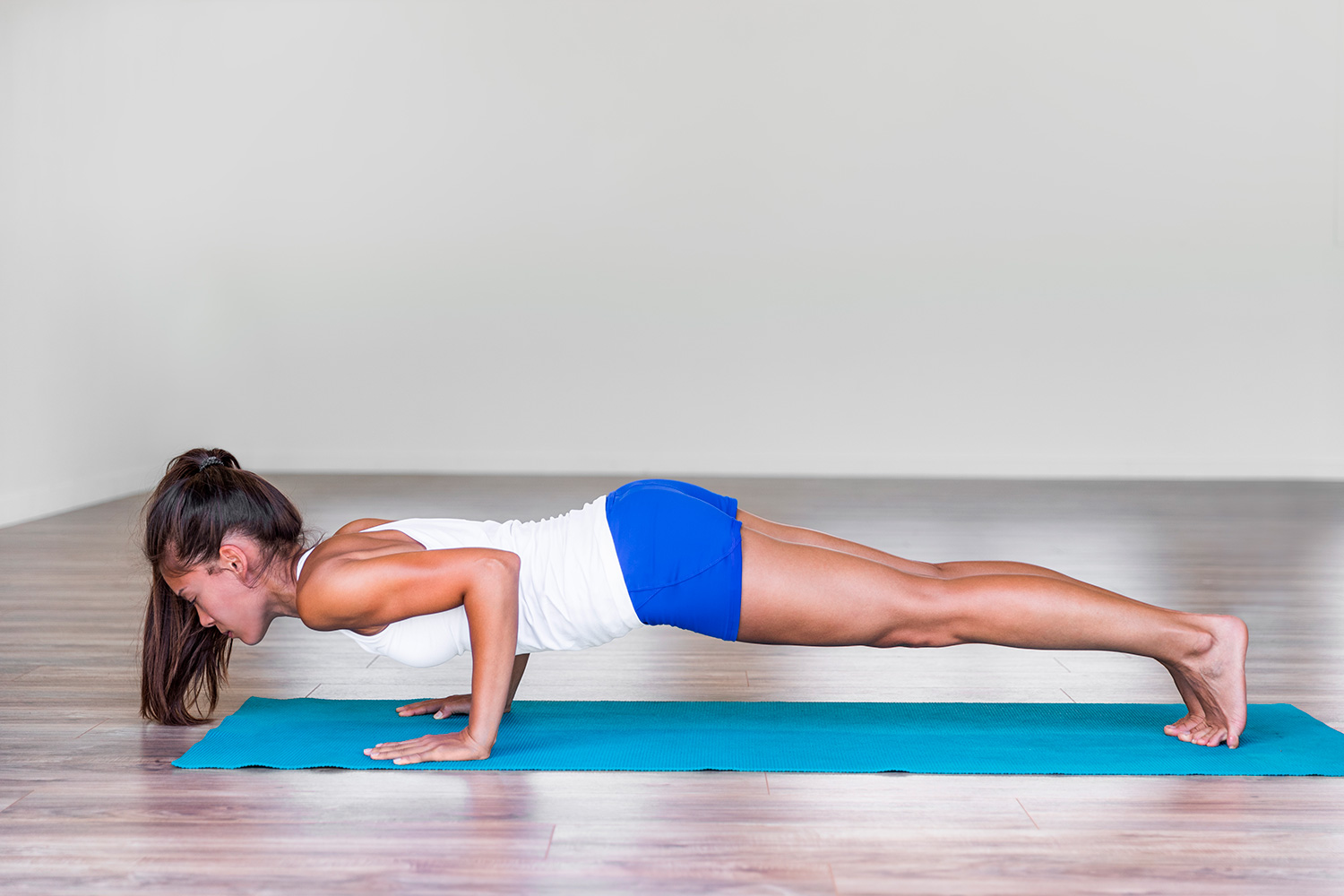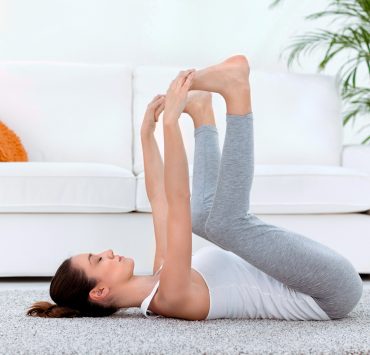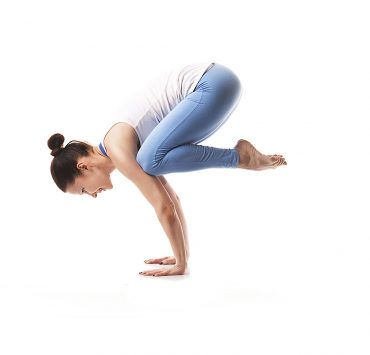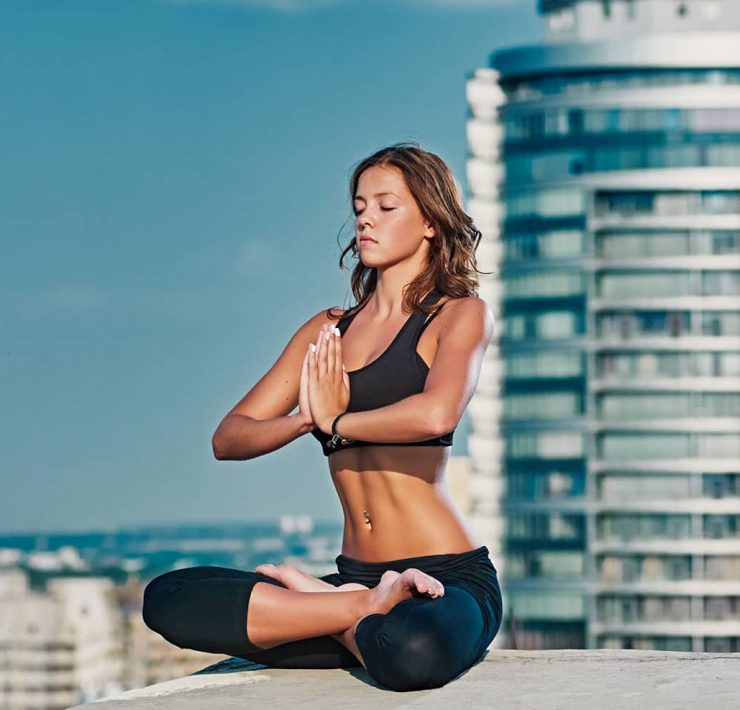
Andrea has been hosting yoga retreats in various locations worldwide…
Chaturanga Dandasana, sometimes called Low Plank, is one of the most common yoga poses we come into, and yet, it is also one of the most poorly understood. This is not because we don’t move through it enough; in fact, Chaturanga shows up on numerous occasions in every single flow class. However, our lack of focus on it and the speed at which we flow through it leaves us unable to grant it the attention it is due. When we embrace Chaturanga Dandasana with full presence of both mind and body, we come to realize that this pose has much more to offer than simply being a means of transition.
What Does Chaturanga Mean?

To understand how to do Chaturanga Dandasana, we can start by exploring what its name more accurately translates to. Though it is commonly called Low Plank, its name speaks to something more than this.
Chaturanga Dandasana translates from Sanskrit to “Four-Limbed Staff Pose.” Taking a closer look at each of the names four parts, we see that chatur means “four,” anga means “limb,” danda means “staff,” and asana translates to “pose.”
It is through the alignment of the body that I discovered the alignment of my mind, self, and intelligence. B.K.S. Iyengar
It is worthwhile to note this translation because it reminds us that Chaturanga Dandasana requires an engagement of the entire body; it a pose supported through all four limbs. The term danda, or “staff,” reminds us of the strength that this pose requires. When we rush through Chaturanga, the body often collapses, whereas this pose should be held as firmly as a yogi’s danda – a wooden stick that supports meditation and pranayama practices.
How to Do Chaturanga Dandasana

Chaturanga Dandasana is often moved through as part of a sequence, but we can perfect our alignment of the pose by practicing it as a stand-alone posture.
- Come into Downward Facing Dog Pose. Your hands should be rooted firmly into the ground with fingers spread wide for support. Push your tailbone up towards the ceiling and press your heels towards the mat. Let your head fall naturally towards the floor and pull the shoulders back and away from the ears.
- Engage the core as you come into High Plank Pose by bringing the heels forward slightly while keeping the toes tucked. Draw your shoulders forward slightly so that they are in line with your elbows and wrists below. The navel pulls up towards the spine gently as the body comes into one straight line from heels to the crown of the head.
- Exhale as you lower the entire body towards the floor while keeping the arms and core engaged. The upper arms should be brought parallel to the ground while keeping the shoulders above the wrists. Continue to hold the shoulders away from the ears.
- Hold for a few moments here in Low Plank before transitioning into Upward Facing Dog. Gently lower the knees, chest, and chin towards the mat. Untuck your toes so that you are supported through the tops of your feet. Push through the arms to lift the torso and the thighs.
- Open through the chest and bring your shoulders back. If necessary, adjust your hand positioning if there is any discomfort in the back. By moving the hands away from the body, pressure is released.
Modifications for Low Plank

There are a variety of ways that Low Plank can be modified for extra ease. Consider the following techniques.
- One way to make this pose more manageable is to hold the same alignment while rooting to the earth through the knees. From Downward Facing Dog, come to your knees before moving into High Plank. As you lower into Low Plank, ensure in the same way as with the full pose that your upper arms are parallel to the ground and that your core is engaged. Hold for a few breaths and then move through to Upward Facing Dog or to Cobra Pose.
- Another modification is to use a block beneath the chest. Start on all fours and place your block beneath you. Come into Chaturanga Dandasana from Table Top position, engaging the core as you rest your chest on the block beneath you. Experiment with various heights but continue to ensure that the pose is supported through the strength of your body. The block is for minimal added support. This modification is not ideal for use when flowing through to Cobra or Upward Facing Dog, but it can help you to practice the pose as a standalone posture while strengthening all associated muscle groups. Release the pose by coming back to Table Top.
- For even greater comfort, you can explore this pose using a bolster. Place the bolster lengthwise beneath you, letting it run from the chest to the pelvis. Begin in Table Top and engage the core as you come into Low Plank, allowing the bolster to provide extra support. Use this modification to practice finding perfect alignment of arms, elbows, and hands.
Chaturanga Dandasana in Sequence

Once you have explored Low Plank as a pose on its own, practice finding the same focus and alignment when moving through it in sequence. The following is a simple sequence that is commonly found within traditional Sun Salutations.
- Begin in Mountain Pose at the top of your mat with your hands in prayer position at the heart. Feet should be about hip distance apart and the spine elongated. Tuck the buttocks in slightly and allow the shoulders to drop away from the ears. Gaze forward.
- Inhale as you raise the arms up and overhead, coming into Raised Hands Pose. Stretch your fingertips towards the sky and turn your hands so that palms are facing one another. Allow the shoulders to fall gently down the back.
- Exhale as you drop the upper body forward to come into Standing Forward Fold. Bend from the hips rather than through the waist, allowing your hands to fall to your knees, shins, feet, or floor. Refrain from rounding through the spine to reach further as the lower back should remain straight. Let your head fall naturally without any strain in the neck.
- To come into Downward Facing Dog, plant your hands into your mat, spreading your fingers wide. Step your feet back about three to four feet so that the body forms and inverted V. Draw your tailbone up towards the ceiling and press down through your heels. The shoulders should once again be gently guided away from the ears. Let your head fall naturally as you press firmly into both feet and hands. Take a few breaths here.
- Engage the core. If you wish to move through the modified form of Chaturanga, come down to your knees. In either case lower the body into a High Plank position. The shoulders should be above the elbows and wrists and the body should form one straight line from head to heels (or head to knees if you have chosen the modified version).
- Exhale as you come into Four-Limbed Staff Pose by bending at the elbows to bring the torso closer to the mat. The upper arms should be parallel to the mat and the shoulders should remain lined up above the wrists and elbows. Harness your strength and focus, keeping the entire body engaged.
- On your next inhalation, surrender the strength and control you’ve harnessed as you move into Upward Facing Dog (or Cobra if it is more accessible to you). Push through the arms and open the chest, letting the shoulders fall back. Gaze forward as you hold here for a few breaths.
Contraindications
When practicing Chaturanga Dandasana, it is important to note that there are a few contraindications associated with the pose. Refrain from practice during pregnancy or in cases of carpal tunnel, wrist injury, shoulder injury, or back injury. Other poses in the sequence have different contraindications so it is important to consult with a healthcare practitioner before beginning any new physical practice.
Benefits of Chaturanga Dandasana

As Low Plank is a pose that engages the entire body, its benefits are widespread. Chaturanga works the muscles of the core and strengthens those in the arms, wrists, and shoulders. It also helps to engage and strengthen back muscles.
Chaturanga Dandasana is a great pose to prepare both body and mind for more advanced poses like inversions and for arm balances such as Scale Pose or Crow Pose. Arm balances require considerable core and arm strength as well as flexibility and strength in the wrists and shoulders.
On a cognitive level, Chaturanga helps to harness our focus and concentration. Once we start to practice this pose as a standalone asana we realize how much dedication and focus it requires. It calls upon our sense of inner strength and control as we carefully lower the body towards the earth.
As a component of Surya Namaskar, or Sun Salutations, Chaturanga’s meaning and potential benefit runs much deeper. What follows Chaturanga in sequence is either Upward Facing Dog or Cobra Pose. The energy of these chest openers is that of an openhearted surrender. Chaturanga then acts as a bridge between control and surrender – as a balancing point between holding our life and potential in our own hands and trusting the flow of the universe.
Deepening Chaturanga Dandasana

Above all, Chaturanga requires focus and intention. It engages the entire body – mind and spirit included – and asks us to move more deeply into our practice both physically and spiritually. By bringing mindful attention to Low Plank, this pose helps us to find the perfect balance between harnessing strength and surrendering to something greater than ourselves.
Surrender is the simple but profound wisdom of yielding to rather than opposing the flow of life. Eckhart Tolle
We can deepen our practice by bringing mindfulness to this supposed duality that exists between control and letting go. As we allow the body and mind to transition effortlessly between one and the next, it becomes apparent that both are a part of the same great dance of life. Bringing this mindful attention to the practice of Chaturanga helps us to deepen our entire yogic practice, supporting us throughout life both on and off the mat.
What's Your Reaction?
Andrea has been hosting yoga retreats in various locations worldwide since 2003 and continues to encourage her students to live as the best version of themselves. Yogic living provides the framework for her informative writing, which is chock-full of beneficial tips and tricks.














